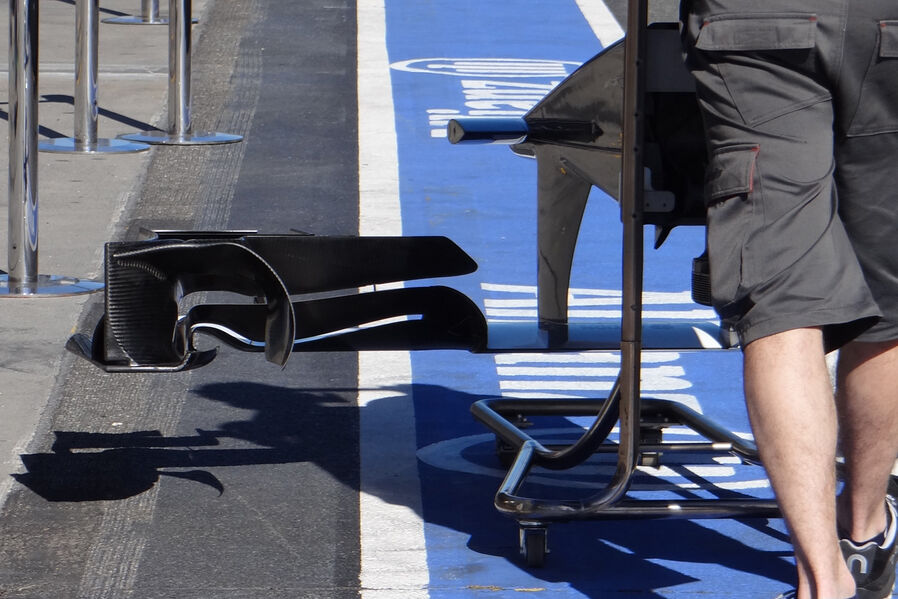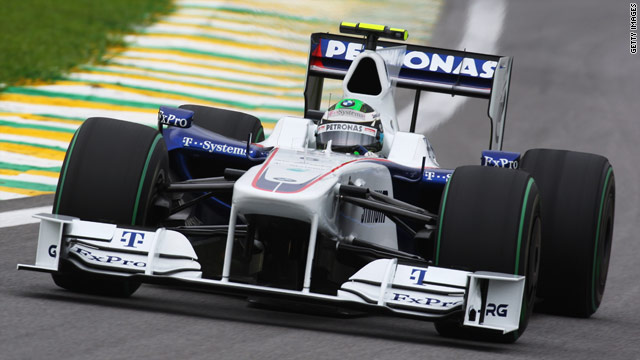Having been looking hard at the wings, and do some of my own cad work on a version some sections, I'm still of the opinion that a full blown inwash wing probably won't be the best solution, as it will also be very tricky to fit in the rules boxes (as already mentioned), and the reduction of downforce generating area will be an issue, not to mention that some extreme angles will be needed.
I've mocked up the front end as part of a project I'm doing, so thought I'll post up some thoughts.


The red lines represent all the rules boxes, as outlined in Balchimonts post previously. Purple section in the middle is the mandated section. Green shape box is the no bodywork zone as defined in section 3.11 of the regs. Oh, and Blue is the wheel/tyre :p
Now, to help distinguish the point I'm trying to make, the Purple section of the endplate vane is the minimum legal size that the endplate can be (95,000mm2 / 275mm high = 345.45mm long... all in side view). So basically, if you use an endplate in the box, it
has through the point where the purple and orange sections meet (that intersection is 345.45mm back from the front edge of the box). Obviously, what you do with the endplate in the box in terms of planar shape doesn't really matter, but to keep the intersection at that point, it would have to be full height along it's length (comes back to the area rule). The orange curve could be smoother I admit, but it's still a steep shape change to get to the inside of the tyre, and your chocking off the underside...
I think something along the lines of what Blanchimont proposed sounds most fesable, with the outer sections being outwashed as best as possible (maybe run the actual wing sections out as wide as possible, and mount the endplate on top of curved down wings, much like some teams already do), and an inner set of vanes to best direct the airflow off the wing sections inside the inner tire sidewall, without shutting off airflow. In effect creating a three division front wing, all with different wing parts and so on...
1) Mandated centre section
2) Inner tire section
3) Outer section
Rjsa's idea also works as it would meet the dimension regs, and not have the chocking underflow... more I look at it the more I understand it, just wonder if you couldn't do similar with curved down wings and vanes instead..
Maybe the current trend for lots of multi planes on the outer sections (I think Ferrari has 7 on the outer ends of their current wing!) will move more towards the middle of the wing, working in the smoother airflow inside the tyre, with less on the outer sections to help reduce sensitivy to tyre interference? Who knows... only 8 months to wait!


Regards
Ed













